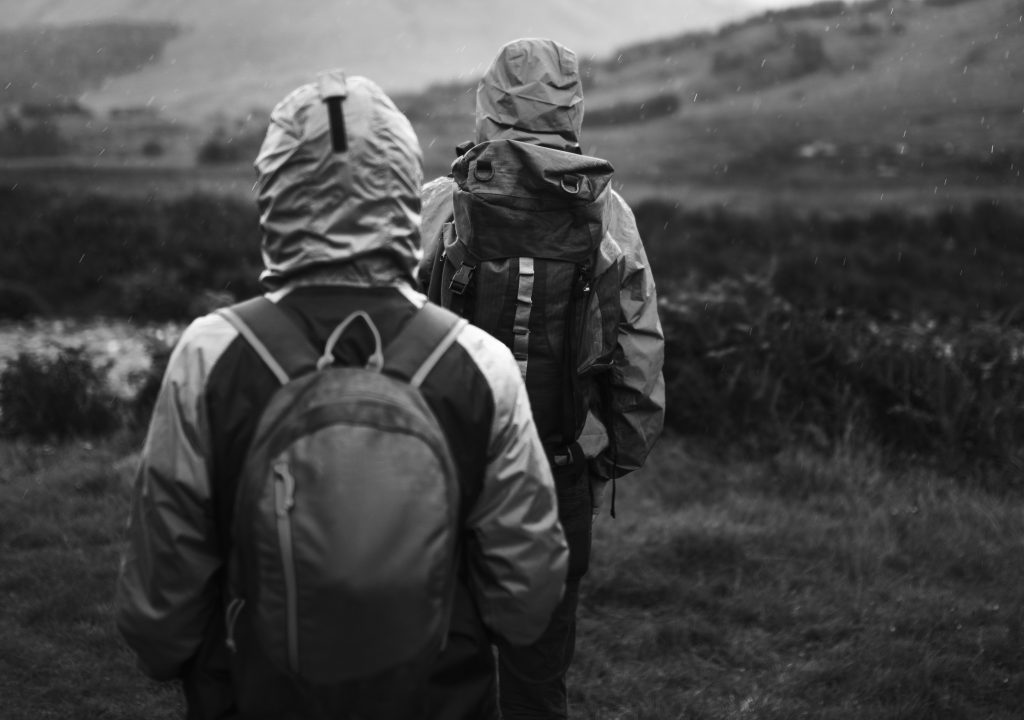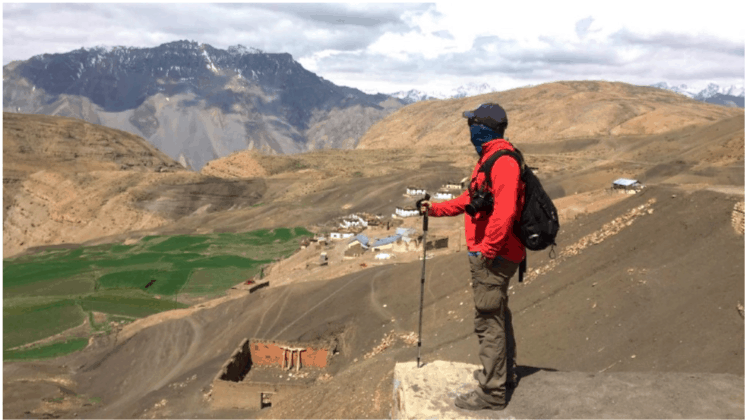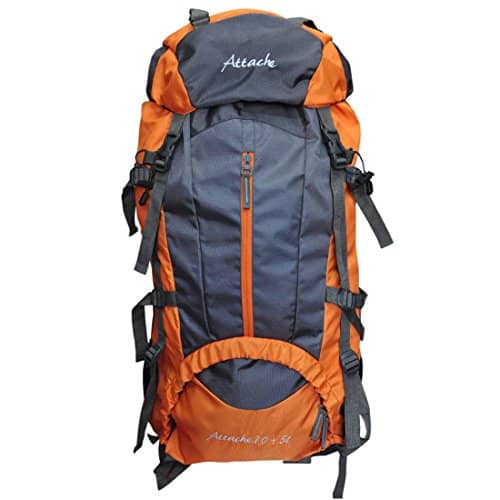Backpacking, once a term only associated with those stuck by wanderlust, is now gaining popularity. What was once common amongst society dropouts in the yesteryears, has now entered travel mainstream due to its unpredictable and restraint-free nature.
As an ardent traveler, I know I would choose the nomadic lifestyle over the routine any day. Often, daydreaming about some far-flung place with an abundance of natural beauty and not building in site, is what gets me through the hum-drum of daily life.
As a reader of our website, I know I can confidently say most of us go through a trailer of such a lifestyle through backpacking adventures. The thrill in hitchhiking, trekking, biking, etc. can truly be cherished and often become the best memories for years to keep. Living out of a backpack gives us a taste of the minimalist lifestyle.
Not having most of our earthly possessions and comforts around, we are stripped of the most basic and banal things – automatically pushing us to learn, discover, and be comfortable with just the least.

Let's quickly dive into the details:
Backing
Backpacking trips make us go through against the most ancient tests and truly puts us in the grind, checking our resilience, resourcefulness, patience, grit, stamina – you name it! One of my favorite takeaways from Sapiens is the beauty and eloquence the author shows in explaining how natural and ancient traveling is. With not many comforts to your name, backpacking takes you on a ride.
Let me walk you through what I think is one of the essential components of a backpacking adventure – The Backpack. I will share my backpack related experiences through these three questions – What to pack? Where to pack? And most importantly, How to pack? So, let’s begin –
What to pack in your backpack?
Getting ready for a trip is another thrill altogether, don’t you agree? The moment of climax before actually embarking on the trip is getting ready to pack! All the excitement of deciding what is needed and how to go about getting your affairs in order is just pure magic! When backpacking, it becomes even more critical that you’re careful and have a clear understanding of what would be required. Remember, compactness is key to ensure you’ll be able to move without a literal load pulling you back freely.
Whether it is a solo adventure in far-flung Spiti or a trek planned to conquer the magical peaks, you’ll need to be fully prepared! If you haven’t already heard of the ‘Ten Essentials Approach,’ I am happy to introduce you to this method of madness! Whenever I plan for a backpacking adventure, this is the way I go about selecting most essentials.
The Ten Essentials Approach is a guide that helps in packing bags without missing out on any essential items. Apart from having everything we need, we also tend to overestimate what we would want on the trip. This list is God-sent on helping to avoid carrying unnecessary weights.
The contents of our bag must contain items that satisfy the below-mentioned checklist only –
- Navigation – Map, Compass
- Sun Protection – Sunglasses and sunscreen
- Insulation – Extra clothing
- Illumination – Headlamp or Flashlight
- First-aid supplies
- Fire – Firestarter, Matches
- Repair kit and tools including a knife
- Nutrition – Extra Food
- Hydration – Water bottle, extra Water
- Emergency shelter
Please note that these days a smartphone can be used to cover some of the items mentioned in the above list. Categories such as navigation, illumination have become more or less obsolete in these modern times.
But, one must not rely too much on technology. You never know where your next adventure might take you. Personally, I prefer to go old school and keep a flashlight and local maps handy, in case of unexpected contingencies.
Other important items can include toiletries, insect repellents, etc. but the contents of the same vary from person to person.

Where (in) to pack?
Now that we have decided what to pack, it takes us to the next question – Where to pack? (Wherein rather)
Choosing a backpack is a matter that requires a lot of attention as far as the traveler is concerned. An uncomfortable backpack can put undue strain on you physically and make you tired sooner rather than later. So, choose your backpack wisely.
Travelers usually own two packs – a day pack to hold enough for a single day outing and a full-size backpack to carry the stuff for full-fledged vacations. Just ensure your backpacks are heavy-duty.
Backpack
Internal frame backpacks are by far the most popular packs among travelers these days. A rigid frame within the pack helps it maintain its shape and hug your back, assisting you in staying balanced while walking or running.
When you wear such a pack, weight is carried relatively low on your body, an advantage for maintaining balance and center of gravity. You can easily adjust the volume of most internal frame packs with compression straps. This ease of access is a significant advantage to this category.
Further, you can choose to remove the tent and sleeping bag from a full-size pack (Emergency shelter category) and transform it into a day pack. However, do note that the body-hugging nature of internal frame packs can make them somewhat uncomfortable in hot weather

Before shopping for a full-size internal frame pack, decide what capacity is right for how it will be used. Trips typically require packs of around 3000 to 5000 cubic inches (50 to 80 liters) capable of carrying about 30 to 55 pounds (13 to 25 kilograms). Long trips require more volume; expeditions can demand even more.
The most important objective in choosing a pack is to find one that fits your body. The pack’s adjustment range must be compatible with the length of your back. Don’t place too much faith in brands and endorsements. Try on various packs and make your own decisions.
Day pack
Day packs usually have volumes of between 1800 to 2500 cubic inches (30 to 40 liters), enough to carry 20 to 30 pounds (9 to 14 kilograms). A large selection of day packs is available in the market these days, varying over a wide range of sturdiness. Day packs have similar required features as full-sized backpacks. Try on and compare day packs as thoroughly as you would a full-size backpack.
How to pack your backpack?
Strategically loading items in a pack can dramatically influence a traveler’s speed, endurance, and enjoyment of an outing. Generally, a traveler will feel best if they can concentrate the load on their hips and avoid loading their backs and shoulders. Pack heavy items as close to your back as possible and center them in the pack to lower your center of gravity, allowing you to keep your balance more easily.
Along with arranging items in the pack for optimum weight distribution, organize them for quick access as well. The stuff that will be needed most often, you should carry close at hand. Articles such as gloves, hats, sunglasses, maps, and insect repellents are ideally carried inside and top pockets, jacket pockets, or a fanny pack that people wear on the abdomen in combination with the main pack. Adjusting and readjusting the backpack during use will help reduce soreness and fatigue.
You will need to devise a strategy to keep pack contents dry in rainy weather. I say this because even packs constructed from waterproof materials are not necessarily waterproof. Water can leak through seams, zippers, the top opening, and places where the coating has worn off.
Individual plastic bags can help protect pack contents, especially when it is necessary to set up camp in the rain. Waterproof pack covers are available as accessories. Some travelers use a large plastic trash bag as a waterproof liner inside their packs.
What next? Tips for backpacking
With fundamentals in place and the dream location all picked up, let me also shed some light on some important things to keep in mind while backpacking
- Be vigilant and aware of your surroundings. When you’re backpacking – you’ll most likely also be living in hostels or outdoors (think, camping, etc.). Thus, both in terms of the physical activity (look where you’re walking, be confident of the area around you) as well as the social setting, you should be aware.
- Pack some snacks for an emergency. Tucking in a couple of bars of chocolates will be helpful, and you’d least expect such a measly decision to be a gift from above!
- If you’re a first-timer, it would be wise to choose an easy destination for your first trip. Choosing it upfront will ensure that you do it right and are confident to do it again! If you’re trekking, pick a well-traveled trail and even splurge and get a guide.
- The clothes you pack must dry quickly, especially if you are looking for some outdoor adventures.
- Your shoes must be the most comfortable thing ever! They should provide enough support to your feet

You should always carry your water bottle and refill it as many times as you need water. It will not only keep you hydrated always, but you will also help in saving the Himalayas from plastic garbage. Remember, every tiny step counts and your step in this direction can help save the Himalayas too !! 🙂 🙂
Conclusion
With the above in mind, you should now be comfortable navigating the art of backpacking. If you’re an avid traveler, comment below and tell us your tricks that might help out fellow travelers.
Have a travel question?? You can subscribe to my YouTube channel and leave a comment to ask your travel questions about traveling to the Himalayas.
If this is your first time and you’re nervous about certain mysteries surrounding backpacking – comment below and will be happy to help! It is always nice to bring aboard another traveler that loves the off-beat experiences!
This, about, sums up the preparation of your backpack and all that you need to know now about your next backpacking adventure is the destination.
Happy tripping…





